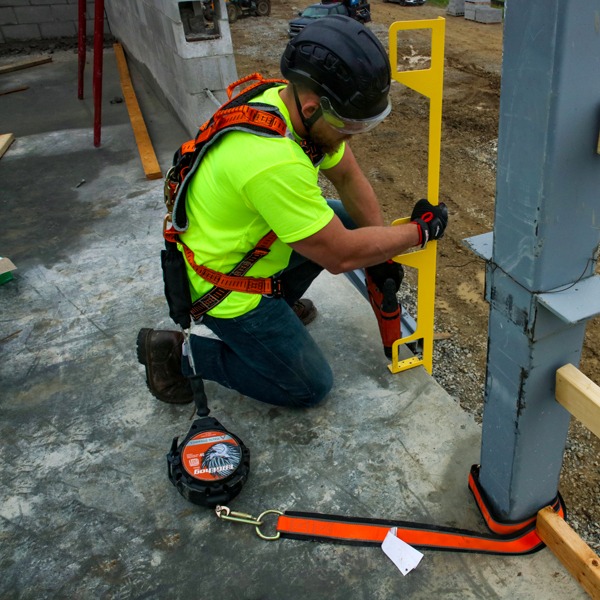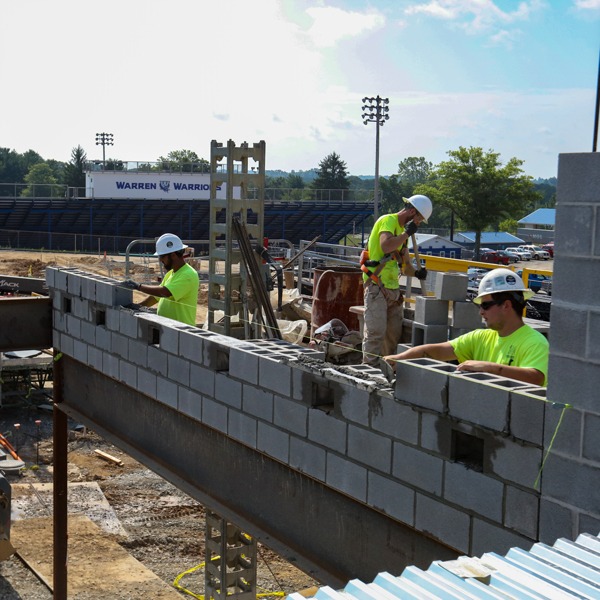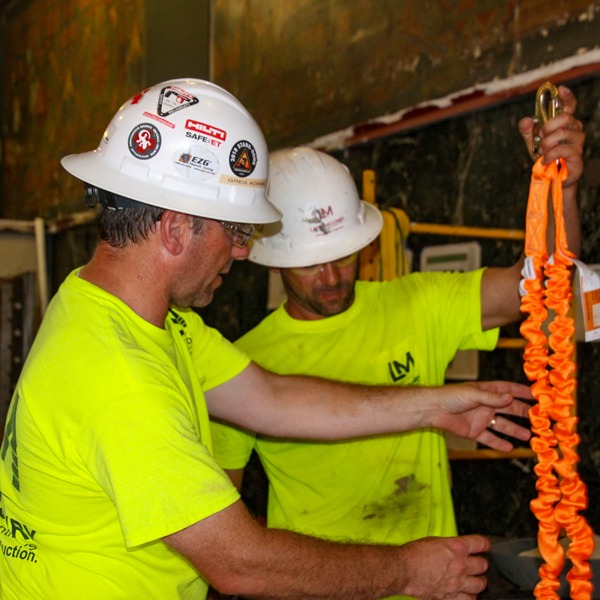Efficiencies In Fall Arrest Systems
Words and Photos: Malta Dynamics
Working in the labor force in any capacity can expose employees to hazardous situations, but none are as consistently lethal as projects that involve working at heights. Unfortunately, year over year, OSHA confirms that slips, trips, and falls are the leading cause of injury and death in the workplace. Safety managers worldwide battle with the task of keeping their workers safe while they operate at heights, and this all starts with a plan to make sure their fall protection precautions are effective and efficient.
The basics of fall protection begin just like school with the ABCDs, which make up the four components of the PFAS (personal fall arrest system). When used together, the Anchorage, Bodywear, Connector, and Deceleration Device form a complete fall arrest system to provide appropriate and reliable safety while working at heights.
The anchor can be removable or permanent, and located overhead or at foot-level. It is the piece of equipment that acts as the point of attachment for the rest of the fall arrest system. It’s incredibly important to make sure the anchor has been approved by a Competent Person because the entire personal fall arrest system is only as strong as the anchor it’s attached to. Anchors must be able to support the intended loads and provide the required safety factor for fall arrest. OSHA 1926.502(d)(15) states that anchorage used for personal fall arrest systems must be capable of supporting at least 5,000 lbs. per employee attached.
Bodywear for personal fall arrest systems typically comes in the form of a full body harness. Safety harnesses are designed to distribute the forces of a fall over the upper thighs, pelvis, chest, and shoulders. In years past, body belts were an acceptable form of bodywear, but studies have shown body belts can cause severe organ damage in the case of a fall. Today’s body harnesses are designed to help distribute suspension forces over the whole body until the worker can be rescued.

Connectors come in a large variety of forms from lanyards to self-retracting lifelines, and they are all designed to connect the worker’s full body harness to the anchorage point. When connecting devices, such as lanyards, are used in the fall restraint application they must be short enough to limit the worker from reaching the hazardous edge, and when connecting devices are used in fall arrest scenarios, they must incorporate some sort of shock absorption, like a shock absorbing lanyard or shock pack on a self-retracting lifeline. One end of the connecting device attaches to the harness and the other end connects to the anchor to create a chain system.
The deceleration device is an equally important factor in the personal fall arrest system. A swift and well planned rescue is vital to saving a worker’s life after a fall has been arrested, and a descending device provides the capability to lower or rise a worker to safety. A rescue self-retracting lifeline is a good example of an effective deceleration device. It will arrest the fall if one occurs and then allow the worker to be hoisted or repelled to safety, usually with a built-in winch.

Choosing the components of the fall arrest system efficiently and knowledgeability is essential to providing appropriate fall protection for the project at hand. Not all fall protection precautions are the same, each piece of equipment has been designed specifically for varying types of fall hazards and different duties mean different equipment is necessary. To determine the right fall protection for the job, one must ask a series of questions. Do I have an anchor? If so, is it located above or below the back D-Ring on my harness? Will I tie-off at foot-level or overhead? Could I encounter a sharp edge, and will I need a leading edge lifeline? Do I have enough fall clearance?
The answers to these questions will lead to an efficient choice in fall protection tailored for the project. Smart choices can be made when choosing the connector and harness, for example: if you’re in a harness all day long, make sure you choose a style and weight that suits the environment. Will the weather be hot or cold? Will you be wearing it for long periods of time? Masons usually wear their gear all day long, so they need something light and comfortable; inspectors wear fall protection occasionally, so their harness choice can be more generic. Make sure that the gear picked is appropriate for the job and the conditions.

Maintaining fall protection equipment is equally as important as choosing gear for an efficient workplace. Proper care and frequent inspections help to ensure equipment lasts for years of service. Fall protection harnesses and lifelines should be stored in a clean, temperature controlled location, away from moisture, and safe from acidic or caustic environments. To keep productivity as a priority, make sure to weigh the options for efficiency in maintenance and storage. For example, storing harnesses in one pile in a room or locker and using a check-in, check-out system is great for keeping track of inventory, but the same plan is not efficient for making sure that harnesses are sized properly for each individual worker and time will have to be spent on making sure the harness fits well before each use.
Following these tips will assist in keeping your fall protection efforts efficient. Combine these guides with the final integral part of the equation: training. Keeping workers trained frequently and properly will keep their knowledge base current and at the forefront of their minds. Training on how to identify fall hazards, use equipment accurately, caring for gear, and how to rescue someone if a fall occurs are all components in creating a crew of workers that are competent and prepared for work at heights. Effective trainings are not those that simply check a box and bore the workers, they must be insightful, interactive, and create an environment where employees are made aware of the ever-present dangers of their jobs and how to safely operate in elevated heights. Simple, personal, frequent trainings keep the team actively engaged in a safety mindset. There are several sources for training materials that have been made available from safety companies all over the internet. Malta Dynamics is a company that offers fillable hazard analysis forms, customizable fall protection plans, rescue plans, inspection checklists, and many more safety resources that are free for use on their website.
In an effort to improve efficiencies in fall protection systems, use the recommendations in this guide. Fall accidents in the workplace can be prevented and greatly reduced if safety managers and employees, alike, can come together to share knowledge and work towards the common goal of practicing proper fall safety.